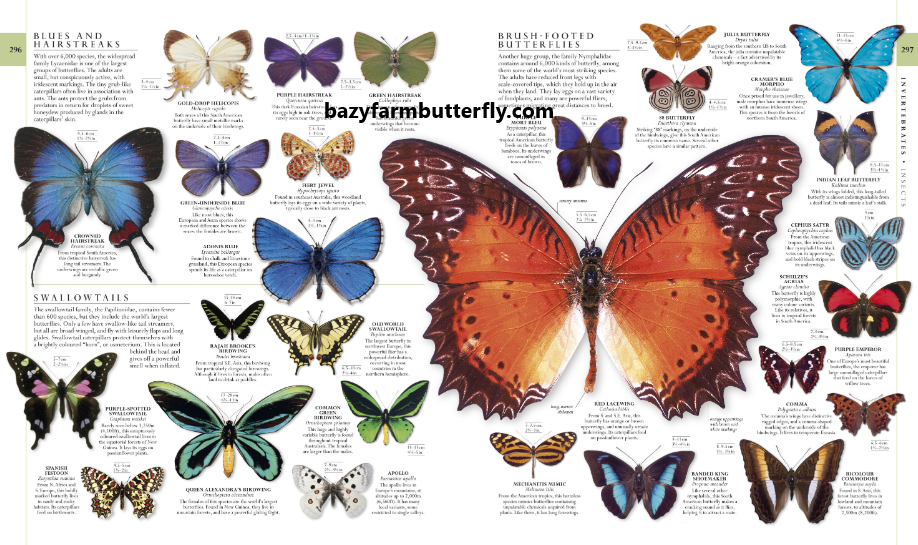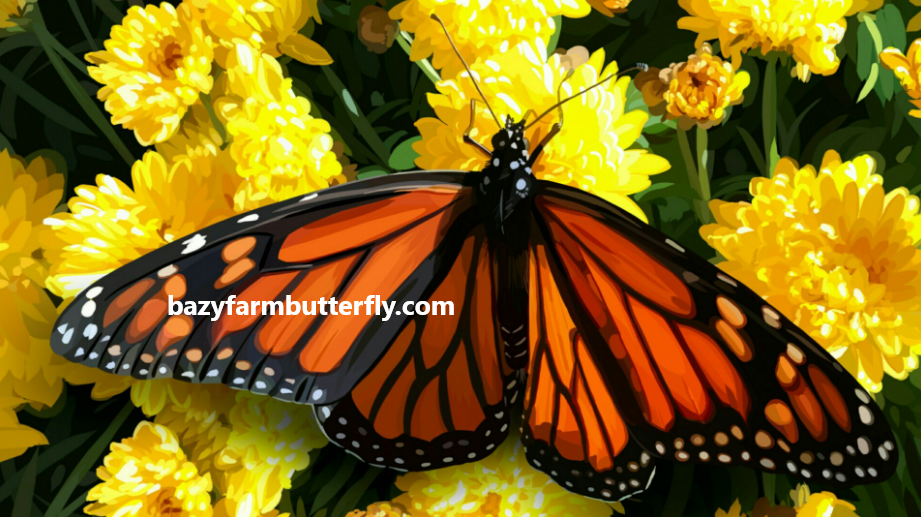Butterflies are some of the most beautiful and fascinating creatures on the planet. From their vibrant colors to their delicate wings, these insects capture our imaginations and fill us with wonder. However, one question that many people ask is, “How long do butterflies live?” The answer is not as straightforward as you might think. Different species have different lifespans, and many factors can affect how long a butterfly lives. In this post, Bazy Farm Butterfly will explore everything you need to know about these incredible creatures.
Understanding the Butterfly Life Cycle

Before diving into the lifespan of butterflies, it’s essential to understand their life cycle. The life cycle of a butterfly consists of four stages: the egg, the larva or caterpillar, the pupa or chrysalis, and the adult butterfly. The length of time a butterfly spends in each stage varies depending on the species, environmental conditions, and time of the year.
The Butterfly Life Cycle
To understand butterfly’s lifespan, it’s important to know a little bit about the butterfly life cycle. The cycle begins when a female butterfly lays her eggs on the leaves or stems of plants. Inside these tiny eggs, caterpillars grow. Depending on the species, the eggs can vary in shape and texture – they can be round, oval, or cylindrical, and smooth, bumpy, or wrinkled. The time it takes for the eggs to hatch can also vary.
Once the eggs hatch, the caterpillars emerge. They spend their time eating and growing, shedding their skin several times as they go through different stages of development. After a period of time, the caterpillar will form a chrysalis or pupa, inside which it will undergo a metamorphosis into an adult butterfly. Finally, the adult butterfly emerges from the chrysalis and begins the cycle again by laying its own eggs.
The Lifespan of Different Butterfly Species

According to a large-scale study conducted in 2009, the lifespan of butterflies varies from a few days to almost a year, depending on the species Here are some examples of different butterfly species and their lifespan:
The Monarch Butterfly
One of the most famous butterfly species is the monarch butterfly. This beautiful creature is known for its stunning orange and black wings, and it has a much longer lifespan than most other butterflies. Monarchs have an average lifespan of around six to eight months, although some individuals can live up to a year.
>>> Read more: What do monarch butterflies eat
The Mourning Cloak Butterfly
Another butterfly species with a longer lifespan is the mourning cloak butterfly. This species is found in North America and Europe and is known for its dark brown wings with yellow edges. Mourning cloak butterflies typically live for around ten months, making them one of the longest-living butterfly species.
The Cabbage White Butterfly
The cabbage white butterfly is a common butterfly species found in gardens and parks across North America and Europe. This species has a much shorter lifespan than the monarch and mourning cloak butterflies, with an average lifespan of just two to four weeks.
The Painted Lady Butterfly
The painted lady butterfly is another common butterfly species found in North America and Europe. This species is known for its orange and black wings with white spots, with an average lifespan of around two to four weeks.
The Blue Morpho Butterfly
The blue morpho butterfly is one of the most stunning butterfly species in the world. This species is found in Central and South America, and it is known for its vibrant blue wings with black edges. Blue morpho butterflies have a relatively short lifespan, with an average lifespan of just four to five weeks [1].
The Swallowtail Butterfly
The swallowtail butterfly is a large and colorful butterfly species found in many parts of the world. This species is known for its striking wings, which often feature bright colors and bold patterns. Swallowtail butterflies have an average lifespan of around two to four weeks, although some species can live for up to six months.
Factors Affecting Butterfly Lifespan

Size of the Butterfly
The size of the butterfly is one of the factors that affect its lifespan. Generally, larger butterflies live longer than smaller ones. This is because larger butterflies have more energy reserves, which they can use to survive long periods without food or water.
Species of the Butterfly
The species of the butterfly is another factor that affects its lifespan. Different species have different average lifespans. For example, the Monarch butterfly has an average lifespan of 6-8 months, while the Painted Lady butterfly has an average lifespan of only 2 weeks.
Habitat of the Butterfly
The habitat of the butterfly is also an important factor that affects its lifespan. Butterflies that live in warm, tropical climates tend to live longer than those that live in colder, temperate climates. This is because the warmer climate provides a more stable environment for the butterfly to thrive in.
Time of Year
The time of year when the butterfly becomes an adult also affects its lifespan. Butterflies that emerge in the spring or summer tend to live longer than those that emerge in the fall or winter. This is because the warmer temperatures and longer days provide more time for the butterfly to mate and reproduce.
Predators
Predators are a major threat to the lifespan of butterflies. Birds, spiders, and other insects are all predators of butterflies. If a butterfly is able to avoid predators, it will have a longer lifespan.
Environmental Factors
Environmental factors such as temperature, humidity, and rainfall can also affect a butterfly’s lifespan. Extreme temperatures or weather conditions can be particularly harmful to butterflies.
Food Sources
The availability of food sources is also an important factor that affects a butterfly’s lifespan. Butterflies that have access to plenty of nectar and other food sources will live longer than those that do not.
Reproduction
Reproduction is another factor that affects a butterfly’s lifespan. Butterflies that mate and reproduce successfully will have a longer lifespan than those that do not.
Conclusion
In conclusion, the lifespan of butterflies varies depending on the species, habitat, and climate. While most adult butterflies live only a few weeks, some species can survive up to 10 months or more. Continuous generations of butterflies can also be produced in warm climates, leading to a longer breeding season. Factors such as predators and pesticides can also impact the lifespan of butterflies. Regardless of their lifespan, butterflies remain one of the most enchanting and captivating insects on the planet, and their beauty and grace never cease to amaze us.

